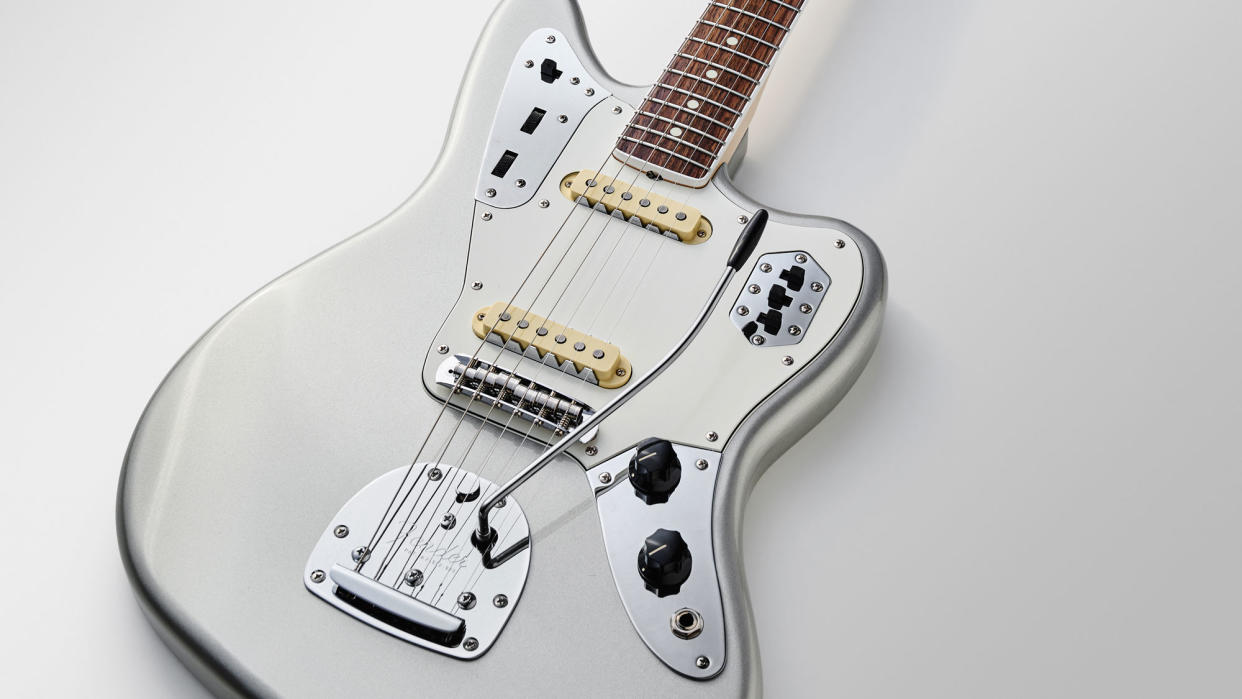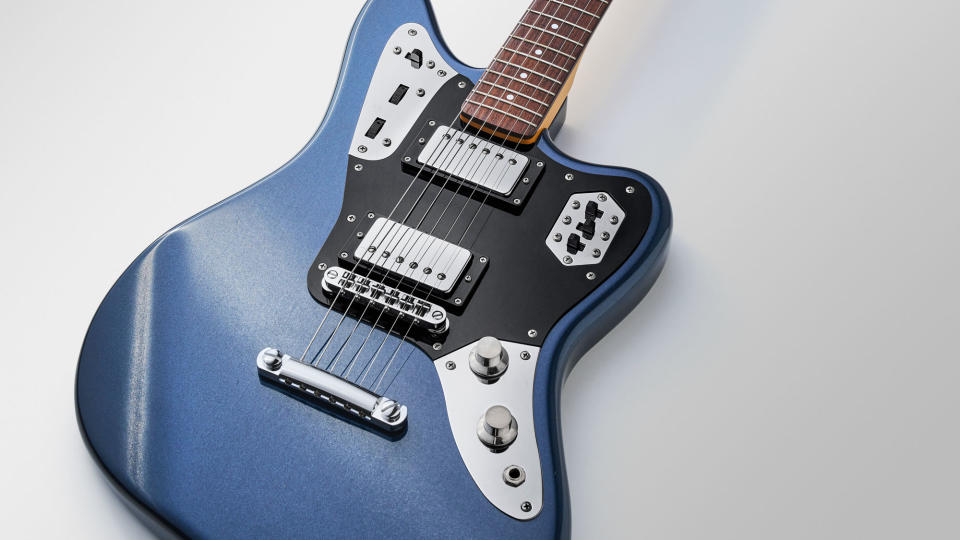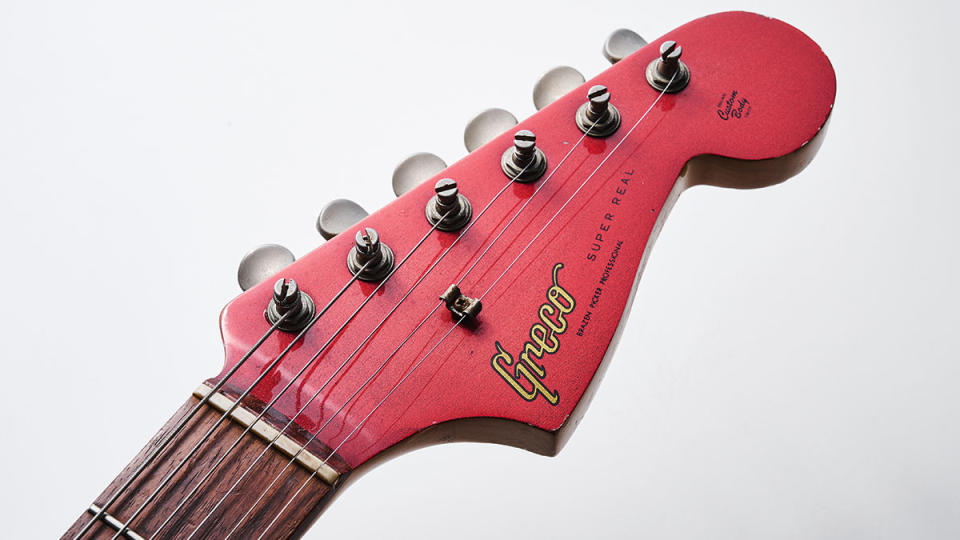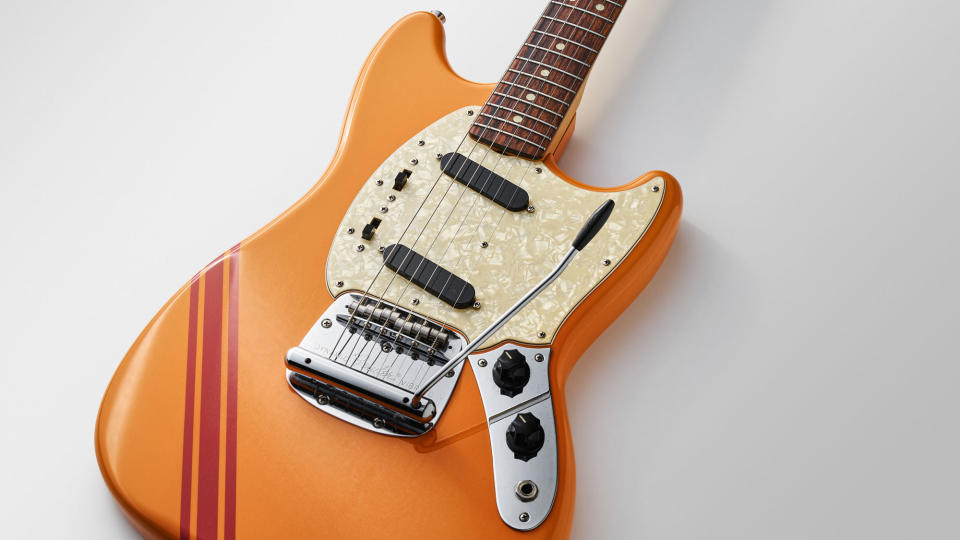“You get so much more choice”: How the Japanese Fender offset conquered the world

Down in rural Somerset, UK you’ll find a little slice of Matsumoto, Japan at the premises of Gas Station Guitars. The store, which primarily does business online, imports a wide variety of rare and sought-after Japanese guitars.
But, as owner Keith Anderson admits, it’s the colourful and quirky offset guitars made by Fender Japan – notably at its famous Fujigen factory – that are his ruling passion.
Less wedded to tradition than US Fenders, the guitars made by Fender Japan have always been a riot of colour and modded features, with guitars often made in vanishingly small runs for individual stores.
In this hothouse environment, which set a premium on exclusive finishes and unique features, traditional offsets such as the Jazzmaster evolved into truly capable and versatile contemporary electrics (just check out the Elemental Jazzmaster).
We join Keith to explore how Japanese Fenders provided the missing link between vintage classics and modern do-it-all offset guitars.
How did you get into selling offsets made by Fender Japan?
“I think a lot of guitarists of my generation got into offsets because it was all we could afford at the time. And I think the same was true for a lot of my favourite bands, like Sonic Youth and Swervedriver when they started out.
“So if people wonder why indie music is so connected with offsets, it’s because we were all poor in the early ’90s! But now they’ve become kind of legendary and, really, Gas Station Guitars has always been about offsets for all of those reasons.”
If people wonder why indie music is so connected with offsets, it’s because we were all poor in the early 90s!
How did the Japanese market for offsets get started?
“Before Fender Japan started making guitars at the Fujigen Gakki plant, a brand called Greco was building Fender clones at Fujigen. They’re rare as hen’s teeth, but I’ve got two here – an old Greco Jazzmaster and a Greco Jag as well – and those are basically the prototypes of the Fender Japan offsets that went on to be made by Fujigen. There’s a couple of little differences, but they’re basically [extremely similar to] the later Fujigen-built Jazzmaster and Jags.
“So I think Fujigen were building [clone] guitars so well back in the late ’70s that’s what got Fender interested in having them make their guitars. But they didn’t really start rolling out offsets until I think the late ’80s.
“I’ve got a few from the late ’80s and then from around 1990 through ’93/’94 onwards, then they started really churning out Jags, Jazzmasters and Mustangs when nobody else was doing them. So I think they almost kickstarted offsets because they were the only ones really building them in any numbers at that time.”
Japanese Fenders are often very colourful and uniquely spec’d, and they enjoy a reputation for pristine build quality. Has that always been the case?
“There are certain periods with Fender Japan that I love where they got really creative. For example, the CIJ ‘Q’ Series were built in a period from around 2000 to 2004 during which time, for some reason, there was an explosion of different colours and finishes. There were some great guitars made just in that little serial number period.
“Then they got a bit more conservative again, but people have always gravitated to guitars by Fender Japan because you get so much more choice with them. The electronics, to be perfectly honest, is the bit that sometimes lets them down – but I think the build quality is the best Fender makes outside the Custom Shop.”

There’s a real crisp, box-fresh look to Japanese Fenders, partly due to their immaculate poly finishes. Was nitro never a selling point in the Japanese market?
“Yeah, a lot of people don’t like the fact that they always use poly finishes as opposed to nitro. A lot of people will ask, ‘What Fender Japan models are finished in nitro?’ and the answer is very few, really – although I’ve actually got a couple of examples in right now. But they tend to stick with poly and, generally speaking, the Japanese market loves pristine new guitars.
They tend to stick with poly and, generally speaking, the Japanese market loves pristine new guitars
“Over here when a guitar gets old or you get a bit bored of it, you might mod it, and British players don’t tend to mind a few dings and bumps. But that’s not really the case in the Japanese market. Over there when your nice, shiny new poly guitar picks up a couple of dings, off it goes.
“They’ll even get left on the street sometimes – there’s a kind of a junk collection service in Japan and they sweep the streets every morning and pick up all these perfectly decent hi-fi systems and guitars that people have put out just because there’s a newer model out.
“So I think the Japanese market prefers poly because it always looks new. And, actually, I don’t think Fujigen ever had a permanent nitro spraying facility. That said, they have used nitro on a couple of guitars and I have one here – it’s a Heritage Jazzmaster and they pulled out all the stops on it with an anodised gold scratchplate. They also made a Japanese Strat exactly like this with a reverse headstock, which was really cool.”

One of the beautiful things about Jazzmasters and Jaguars from Japan is the sheer range of custom colours that are available as well as special-finish options.
“Yes, and one thing I particularly love about Fender Japan is all the guitars with matching headstocks. These days, people are into big colours on an offset and I think that’s actually because of Fender Japan – they were the ones in the mid-’90s who were doing all these amazing finishes – because the [Japanese market] expected their guitars to be, like, Daphne Blue or Sonic Blue with matching headstocks.
“That continues to this day – for example, I’ve got an Inca Silver Jaguar here that’s just come out that they’ve also put neck binding on, which is quite nice. As far as I’m aware, that particular model has only been released for one single store in Japan; no-one else is getting them. So that’s going to be as rare as hen’s teeth.”
I always thought that Fujigen didn’t actually like making basswood guitars because they needed different tooling [settings and tolerances] because it’s such a soft wood
How about underneath the finishes – are the tonewoods used what you’d expect of traditional Fenders?
“All the offsets from the ’90s, apart from the Mustangs, were alder-bodied. More recently, for some reason, they’ve moved to basswood. I’m not sure why that is – it’s not massively popular over here. I don’t mind it personally and it is lighter than [alder].
“But I always thought that Fujigen didn’t actually like making basswood guitars because they needed different tooling [settings and tolerances] because it’s such a soft wood. So all their machines will have had to have been set up again for basswood because previously they were typically always alder – especially through the ’90s – and those alder guitars tend to be the most sought-after.”

You get the impression Fender Japan has always been a bit of a law unto itself…
“The relationship between the [main US Fender brand and Fender Japan] is really bizarre. I get people messaging me saying, ‘I just bought this Fender Japan guitar and it doesn’t work in the serial number search box.’ And I have to say, ‘No, that’s right – it won’t.’
I love that the Japanese Fenders are a law unto themselves. At Fujigen especially, it often seems like there was little rhyme nor reason to anything they ever did
“Because there’s no Fender search tool that’s going to give you the exact date of a Japanese Fender. So all you’ve got to go on is the serial number and that’s [only accurate to] within a period of two or three years.
“I love that the Japanese Fenders are a law unto themselves. At Fujigen especially, it often seems like there was little rhyme nor reason to anything they ever did. Sometimes, I’m working on a guitar and I take the neck off and you look at the neck pocket and it’s got all these Japanese inscriptions and [when you investigate it] it basically means nothing!
“I think that’s what keeps me interested, to be honest – you just never know what’s gonna turn up. My guys in Japan [sourcing guitars] are great. They know the kind of stuff I like, which is offsets. So they find me all the weird and wonderful stuff!”
See Gas Station Guitars for more Fender Japan rarities.

